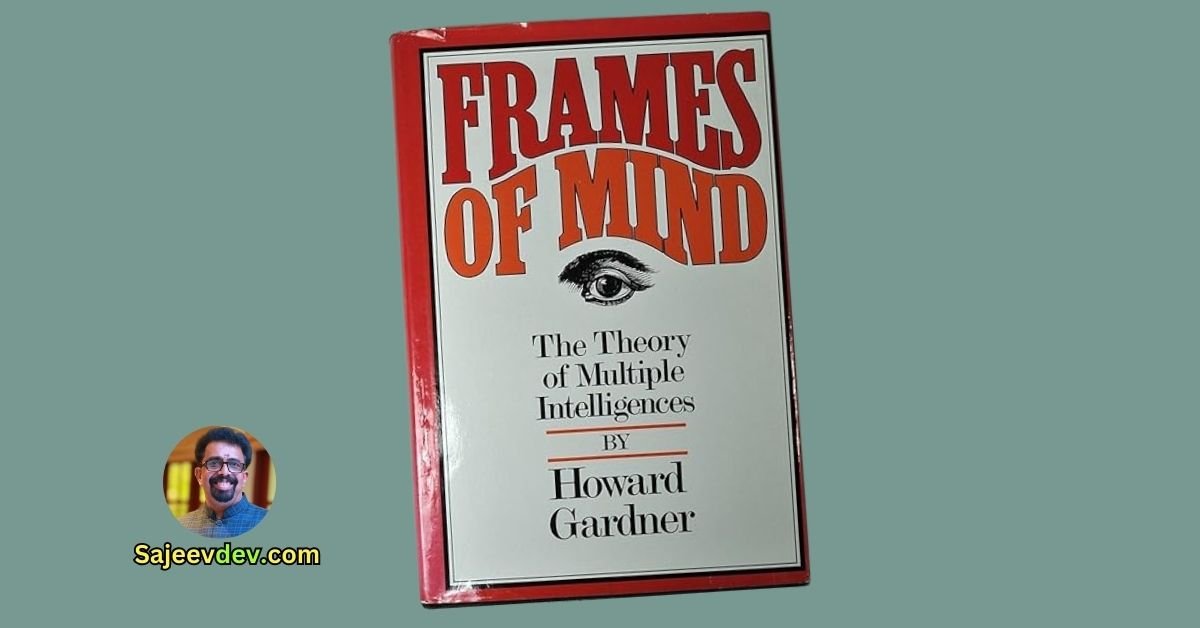Introduction to Gardner’s Theory
Howard Gardner’s seminal work, Frames of Mind: The Theory of Multiple Intelligences, published in 1983, marked a pivotal shift in our understanding of human intelligence. In an era dominated by the concept of a singular intelligence quotient (IQ), Gardner’s theory presented a revolutionary perspective. The academic environment of the early 1980s was heavily influenced by psychometric approaches, focusing on standardized testing and a narrow interpretation of cognitive abilities. Gardner, a psychologist and professor at Harvard University, sought to challenge this prevailing notion by introducing a more nuanced understanding of human capabilities.
Gardner’s primary motivation for developing his theory stemmed from his dissatisfaction with traditional intelligence tests. He observed that these tests often failed to capture the diverse range of human skills and talents. Drawing on research from a variety of fields, including neuroscience, anthropology, and developmental psychology, Gardner proposed that intelligence is not a single, monolithic construct. Instead, he argued, it comprises multiple distinct, yet interrelated, cognitive abilities. This paradigm shift opened new avenues for exploring human potential and provided a more inclusive framework for understanding intelligence.
Upon its release, Frames of Mind received a mixed reception. While some scholars and educators embraced Gardner’s ideas, recognizing their potential to transform educational practices, others were skeptical. Critics questioned the empirical basis of his theory and the practical implications for teaching and assessment. Despite this initial controversy, Gardner’s work has had a profound impact on educational psychology. It has inspired a more holistic approach to teaching, one that recognizes and nurtures diverse intelligences in students.
The key thesis of Gardner’s work is the argument that intelligence is multifaceted. He identified several distinct types of intelligences, including linguistic, logical-mathematical, musical, and spatial, among others. This broadened perspective challenges the traditional view of intelligence as a singular, measurable entity and encourages a more comprehensive understanding of human cognitive abilities.
The Eight Intelligences Explained
Howard Gardner’s theory of multiple intelligences, as presented in ‘Frames of Mind,’ reshapes our understanding of human cognitive capabilities by identifying eight distinct types of intelligence. Each type of intelligence offers unique strengths and is manifested in various real-world contexts.
Linguistic Intelligence refers to the ability to use language effectively for communication and expression. Individuals with high linguistic intelligence, such as writers, poets, and orators, excel in crafting words to convey complex ideas and emotions. In educational settings, they often demonstrate proficiency in reading, writing, and storytelling.
Logical-Mathematical Intelligence involves the capacity to analyze problems logically, carry out mathematical operations, and investigate issues scientifically. Mathematicians, scientists, and engineers typically exhibit high levels of this intelligence. Their ability to reason and think abstractly is crucial in both academic and practical problem-solving scenarios.
Spatial Intelligence is characterized by an acute awareness of the visual-spatial world. Architects, artists, and pilots often possess strong spatial intelligence, enabling them to visualize and manipulate objects or navigate spaces effectively. This intelligence is also vital in fields such as graphic design and urban planning.
Musical Intelligence denotes a sensitivity to rhythm, pitch, melody, and tone. Musicians, composers, and conductors exemplify this intelligence through their ability to create, perform, and appreciate music. In education, students with high musical intelligence might excel in activities involving music theory, performance, and composition.
Bodily-Kinesthetic Intelligence reflects the capability to use one’s physical body skillfully and handle objects adroitly. Dancers, athletes, and surgeons often have high bodily-kinesthetic intelligence, demonstrating exceptional coordination and dexterity. This intelligence is critical for careers that require refined motor skills and physical agility.
Interpersonal Intelligence is the ability to understand and interact effectively with others. Individuals such as teachers, social workers, and politicians who possess strong interpersonal intelligence are adept at perceiving and responding to the emotions, motivations, and desires of others. This intelligence is essential for leadership roles and collaborative environments.
Intrapersonal Intelligence involves a deep awareness of one’s own feelings, motivations, and inner states. Philosophers, psychologists, and writers often exhibit high intrapersonal intelligence, which allows them to introspect and understand their own behavior and thoughts. This intelligence aids in personal growth and self-reflection.
Naturalistic Intelligence is the ability to recognize, categorize, and draw upon certain features of the environment. Biologists, conservationists, and farmers typically show strong naturalistic intelligence, which enables them to understand and work effectively with the natural world. It is increasingly relevant in discussions about sustainability and environmental awareness.
Gardner’s identification of multiple intelligences challenges traditional IQ testing and cognitive assessment methods by broadening the scope of what is considered intelligence. Instead of focusing solely on linguistic and logical-mathematical skills, multiple intelligences theory acknowledges and celebrates diverse cognitive strengths, promoting a more inclusive and holistic approach to understanding human capabilities.
Critiques and Counterarguments
Since the publication of Howard Gardner’s Frames of Mind: The Theory of Multiple Intelligences, numerous critiques have emerged, both from academic circles and educational practitioners. One of the primary academic criticisms revolves around the lack of empirical evidence supporting the distinctiveness of the intelligences proposed by Gardner. Critics argue that the theory lacks rigorous scientific validation and that the multiple intelligences could simply be manifestations of a single general intelligence, often referred to as ‘g.’ This perspective suggests that Gardner’s intelligences may not be as independent as initially claimed.
Practical critiques have also surfaced concerning the implementation of the theory within educational curricula. Educators often find it challenging to design and adapt teaching methods that cater to all the different intelligences effectively. The practical application of Gardner’s theory can be resource-intensive, requiring significant adjustments in teaching styles, classroom environments, and assessment methods. These challenges raise questions about the feasibility and scalability of integrating multiple intelligences into standard educational practices.
Gardner has responded to these critiques by emphasizing that his theory was never intended to be a rigid framework but rather a flexible guide to understanding the diverse capabilities of human cognition. He highlights that the theory has sparked valuable dialogue and innovation in educational practices, encouraging a more holistic approach to teaching and learning. Gardner also points out that ongoing research continues to explore the nuances and potential applications of multiple intelligences, leading to an evolving understanding of the concept.
Alternative theories of intelligence, such as Robert Sternberg’s Triarchic Theory of Intelligence and Daniel Goleman’s Emotional Intelligence, offer different perspectives that contrast with Gardner’s framework. Sternberg’s theory, for instance, categorizes intelligence into analytical, creative, and practical components, focusing on how individuals process information and solve problems. Goleman’s emphasis on emotional intelligence highlights the role of emotions in cognitive processes and interpersonal interactions. While these theories provide valuable insights, Gardner’s multiple intelligences theory remains influential, particularly in its advocacy for recognizing and nurturing a broader spectrum of human potential.
Impact and Future Directions
Since its publication in 1983, Howard Gardner’s ‘Frames of Mind: The Theory of Multiple Intelligences’ has had a profound impact on education, psychology, and various other fields. Gardner’s theory, which posits that intelligence is not a single, monolithic construct but rather a collection of distinct modalities, has revolutionized the way educators approach teaching and curriculum design. Traditional education systems, which often prioritize linguistic and logical-mathematical intelligences, have been challenged to broaden their scope to include other forms, such as spatial, musical, and interpersonal intelligences. This inclusive approach has led to more personalized and effective teaching strategies that cater to the diverse strengths of all students.
Beyond the classroom, Gardner’s theory has influenced educational policy and reform. Policymakers have increasingly recognized the importance of fostering a variety of intelligences to prepare students for a complex, rapidly changing world. This has led to the development of curricula that are more holistic and interdisciplinary, integrating arts and physical education alongside traditional academic subjects. In turn, this has promoted a more inclusive and equitable educational landscape, where students of varying abilities and interests can thrive.
The cultural and social implications of recognizing multiple intelligences are equally significant. By valuing diverse forms of intelligence, Gardner’s theory has contributed to a greater appreciation for diversity and inclusivity in learning environments. This has helped to break down stereotypes and biases that often marginalize students who do not fit the conventional mold of academic success. As a result, there is a growing recognition that everyone has unique strengths and potential, which can be nurtured through supportive and adaptable educational practices.
Looking ahead, Gardner’s theory continues to inspire new avenues of research in cognitive science and education. Emerging technologies, such as artificial intelligence and neuroimaging, offer exciting possibilities for further understanding the complexities of human intelligence. These advancements could lead to more sophisticated and tailored educational tools, enhancing our ability to support diverse learning needs. Additionally, as society becomes increasingly interconnected, the global application of multiple intelligences theory could foster more inclusive and culturally responsive educational practices worldwide.


